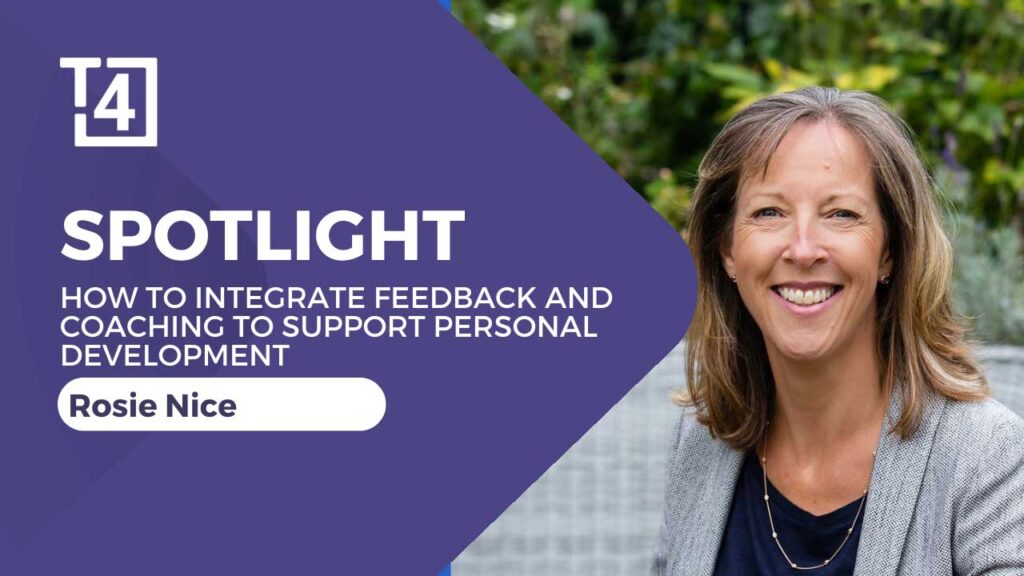During this session, Rosie Nice took a deep dive into the key strategies for cultivating personal and professional growth in a school setting. She highlighted that honesty and compassionate communication are essential to contributing to a thriving school environment. When individuals feel heard, valued, and supported, they are more likely to engage fully in their roles, collaborate effectively, and contribute to a positive culture. In our recent session, we explored three fundamental elements for building a strong, supportive culture: feedback, coaching and psychological safety.
Feedback: The power of kindness and clarity

Effective feedback is a tool for self-awareness and development. When done right, it enhances motivation, performance and trust. It is a necessary component for both professional and personal growth, allowing team members to gain insight into their strengths while identifying areas for improvement. However, not all feedback is helpful, delivering it in a way that is constructive rather than critical is key. To ensure feedback is constructive, consider these principles:
- Offer information, not feelings: keep it objective and fact-based.
- Clarify your intentions: are you aiming to reinforce or change a behaviour?
- Focus on behaviour, not personality: address actions, not who someone is.
- Enhance performance: feedback should help individuals grow and improve, helping individuals refine their skills and abilities.
Rosie introduced a structured approach called the BEST model to ensure feedback is clear and actionable:
- B (Behaviour): “I noticed…”. Clearly describe the observed behaviour.
- E (Effect): Explain the impact of the behaviour.
- S (Suggestion): Provide a recommendation for improvement.
- T (Timescale): Set a timeframe for making adjustments.
She also shared additional tips around feedback, such as starting with motivational feedback by highlighting strengths to build confidence, followed by developmental feedback, which offers specific, actionable suggestions for improvement. She emphasised the importance of avoiding the word “but” and recommended replacing it with “and” or a pause instead, to maintain positive reinforcement and prevent negating the previous statement.
Coaching: Unlocking potential
Coaching integrates feedback into a structured, supportive approach. Unlike mentoring, which involves sharing personal experiences, coaching focuses on guiding individuals to find their own solutions. It empowers people to take ownership of their growth by helping them reflect, problem-solve and set meaningful goals.
Timothy Gallway’s definition of coaching, from his book The Inner Game captures its essence:
“Coaching is unlocking a person’s potential to maximise their own performance. It is helping them to learn rather than teaching them.”
Effective coaching encourages self-awareness and responsibility. It relies on asking questions and listening rather than simply providing answers. Instead of telling individuals what to do, it helps them identify goals and develop their own solutions. This encourages independence and long-term growth.
Rosie introduced the You – Me – Agree model to integrate feedback with a coaching approach. The first step is You, where the coachee reflects on their own performance with a guiding question. The second step is Me, where the coach shares an external perspective by describing what they observed. The final step is Agree, where both parties find common ground on strengths and areas for improvement, setting clear next steps. By following this model, coaching becomes a collaborative and empowering process rather than a directive one.
Psychological safety: A foundation for growth
Dr Amy Edmondson defines psychological safety as “a shared belief that it is okay to take risks, express ideas and concerns, speak up with questions, and admit mistakes without fear of negative consequences”.
Creating psychological safety leads to better decision making, engagement, and continuous improvement. However, it’s important to note that psychological safety does not mean lowering standards, it’s about nurturing an environment where people feel safe to take risks and learn from their experiences. When people feel psychologically safe, they are more willing to share ideas, challenge assumptions and innovate without fear of failure.
Some key practices help build psychological safety in schools:
- Establishing clear norms and expectations creates a sense of structure and mutual respect.
- Encouraging open communication and active listening allows team members to feel heard and valued.
- Supporting colleagues and showing appreciation for their contributions strengthens trust and relationships.
- Admitting one’s own fallibility and leading by example demonstrate vulnerability, which encourages others to do the same.
- Inviting input and responding productively ensures that feedback is valued and leads to positive action.
When schools create a culture of open, honest, and compassionate feedback, integrate a coaching approach, and prioritise psychological safety, both students and educators thrive. By promoting an environment where people feel valued, heard and supported, schools can strengthen their teams, enhance learning outcomes and create lasting positive change.
If you’re interested in feedback and coaching, explore our Best School to Work programme. We provide resources and practical guidance to help build a positive school environment that supports both teachers and students. Visit Best School to Work for more information, or book a demo today to see how we can support your school’s goals.



